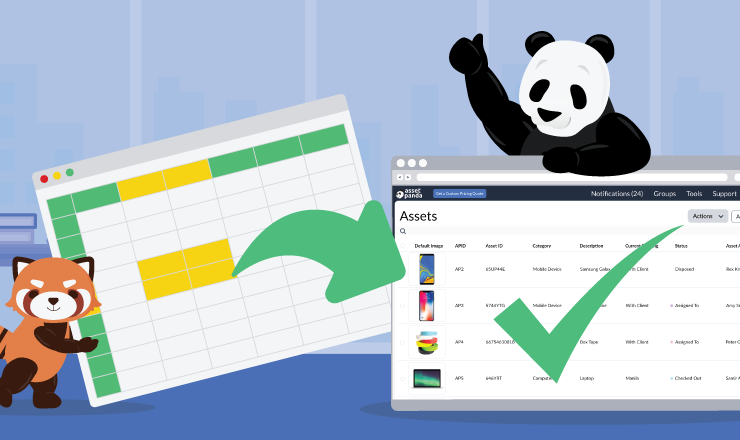Assets vs. Inventory: Can You Have Both? (Yes, You Can.)

Take Control of Your Assets
A personalized demo is just one click away.
Assets vs. inventory: What’s the difference? These two terms are often used interchangeably, but in reality, they have distinguishing characteristics.
- Assets, often called fixed assets, are the tools, equipment, and other items upon which you depend to run your business. You don’t sell them, so they don’t produce a profit for you; however, each of your fixed assets has value and must be reported for accounting and compliance purposes. Examples are office furniture, IT equipment, company vehicles, and office space. All of those assets make it possible for you to sell your inventory.
- Inventory, on the other hand, consists of the items you actually sell to make a profit. Whether you’re selling parts or a finished product, that’s your inventory, and it, too, must be tracked in order to keep your business running smoothly and your customers happy.
Maintaining proper inventory is a careful process. You want enough to accommodate your customers’ needs now, but you don’t want so much that you run out of inventory and ask your customers to wait – because chances are good they’ll simply go elsewhere. Some organizations overestimate their needs and wind up with excess inventory that languishes on shelves and even expires.
Let’s take a look at how each of those systems works:
An asset tracking system enables you to track and monitor the exact whereabouts and condition of each of your fixed assets, along with a host of other asset-related data, from an item’s depreciation to its complete maintenance history, insurance policy and warranty information, check-in/check-out status, maintenance schedules, service contracts and expiration dates, audits, reports and more. Your asset tracking system can remind you when an asset is due for service, allow you to set up custom security settings based on an employee’s function or location, and track items by person or location, to name just a few possibilities. Among the benefits associated with an asset tracking system are the elimination of lost or stolen assets, the elimination of ghost assets, lower insurance costs, and savings of time, money and frustration.
An inventory tracking system, meanwhile, enables you to determine which products are selling well, and which ones aren’t. You’re able to better predict and plan for seasonal variations, analyze buying patterns and track returns and replenishment. You can also monitor depreciation, run reports and eliminate waste while you save money and time. Best of all, you can find that happy medium that ensures your customers always have access to the products they love.
Asset Panda’s simple yet powerful free mobile app allows you to track, monitor and manage your assets and inventory through its intuitive, completely customizable interface. From the palm of your hand, you have access to the entire lifecycle of your assets and inventory. Display and organize your data any way you want. Create work orders and custom reports, alerts and security settings. Asset Panda is so easy to understand, you won’t need extensive training to get up to speed. And because the app syncs with the cloud, your data is always in real time.
Assets vs. inventory? How about both? If you’re ready for a more streamlined, accurate approach to your asset and inventory tracking, visit assetpanda.com, and try it free for 14 days.
Take Control of Your Assets
A personalized demo is just one click away.
Related News & Press

Learn more from an Asset Panda expert
Get a FREE consultation with an asset tracking expert to find out how you can transform your asset tracking.
Contact our Sales Team at (888) 928-6112


